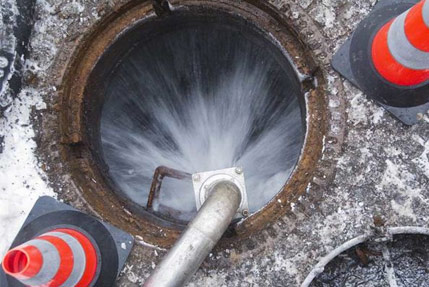Sewage backup in basement cost: Understanding the Cost of Sewage Backup in the Basement
Sewage backup in the basement is a distressing and potentially costly problem that homeowners may encounter. It not only causes significant inconvenience but also poses health risks due to the presence of hazardous contaminants. In this article, we will explore the factors that influence the cost of dealing with a sewage backup in the basement and discuss potential expenses involved.

Read on: 7 Ways of Addressing Environmental Challenges
1. Cleanup and Restoration Services
The first major expense associated with sewage backup in the basement is hiring professional cleanup and restoration services. These specialized companies have the expertise and equipment to safely remove the sewage, sanitize the affected area, and restore the basement to its pre-loss condition. The cost of these services can vary depending on the extent of the damage, the size of the basement, and the time required for the cleanup.
2. Water Extraction and Drying
Sewage backup often involves a significant amount of water in the basement, which needs to be extracted and the area thoroughly dried. Water extraction may involve the use of pumps, wet vacuums, or other specialized equipment. The cost of water extraction and drying will depend on the volume of water and the duration required for complete drying.
See also: Efficient Sewage Removal Services Ensure Clean and Healthy Communities
3. Plumbing Repairs
Sewage backup is often caused by problems in the plumbing system, such as a clogged or damaged sewer line. Once the immediate cleanup is complete, it is essential to address the underlying plumbing issues to prevent future incidents. The cost of plumbing repairs can vary significantly depending on the complexity of the problem and the extent of the required repairs or replacements.
4. Replacement of Damaged Items
Furniture, appliances, flooring, and other items in the basement may sustain damage during a sewage backup. Porous materials like carpets and upholstered furniture may need to be replaced due to contamination and the risk of mold growth. Non-porous items can often be salvaged with thorough cleaning and disinfection. The cost of replacing damaged items will depend on their quality, quantity, and the homeowner’s insurance coverage.
Read on: 6 Ways of Addressing Environmental Challenges and Ensuring Public Health
5. Mold Remediation
Sewage backup creates an ideal environment for mold growth due to the moisture and organic matter present. Mold remediation may be necessary if mold colonies have developed in the basement. The cost of mold remediation will depend on the extent of the mold infestation and the techniques required for removal.
6. Insurance Coverage
The cost of dealing with a sewage backup in the basement can be mitigated by homeowner’s insurance. Some policies cover water damage and sewage backup, but coverage may vary depending on the specific policy and the cause of the backup. It is crucial to review your insurance policy and contact your insurance provider to understand what expenses will be covered.
See also: The Cost of Sewage Cleanup: A Comprehensive Analysis
Conclusion
Dealing with a sewage backup in the basement can be a costly endeavor, considering the various expenses involved in cleanup, restoration, plumbing repairs, item replacements, and potential mold remediation. The total cost will depend on factors such as the extent of the damage, the size of the basement, and the homeowner’s insurance coverage. In such situations, it is essential to act promptly, document the damage thoroughly, and engage professional services to ensure proper cleanup and minimize the financial impact.
Leave a Reply